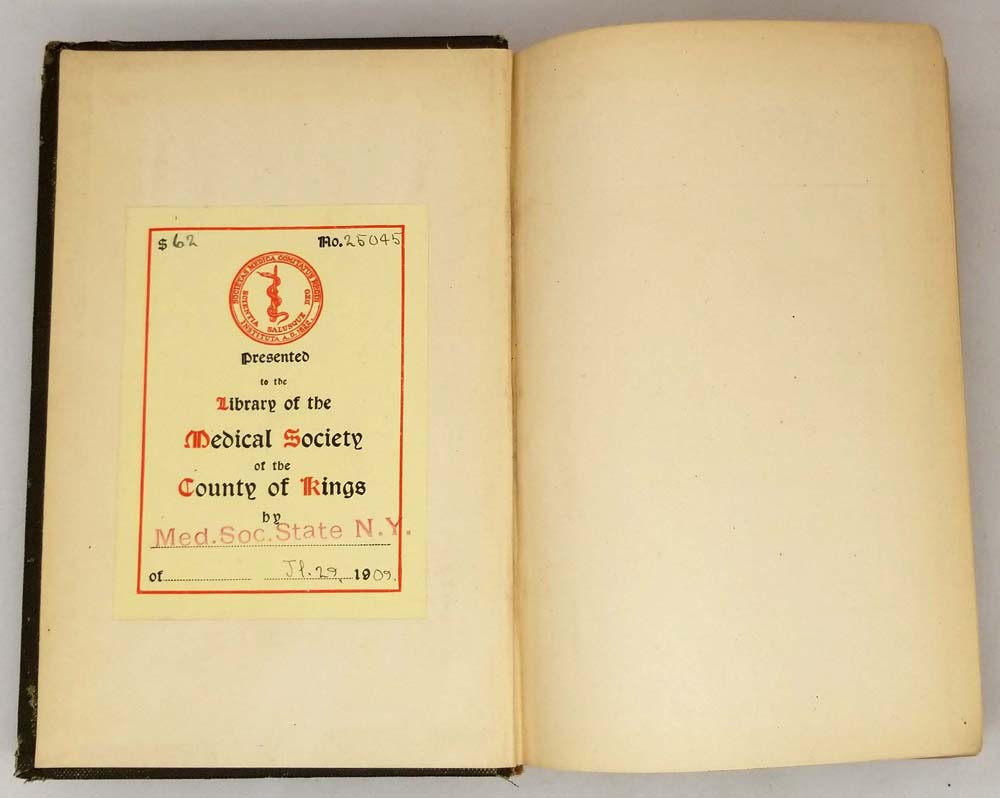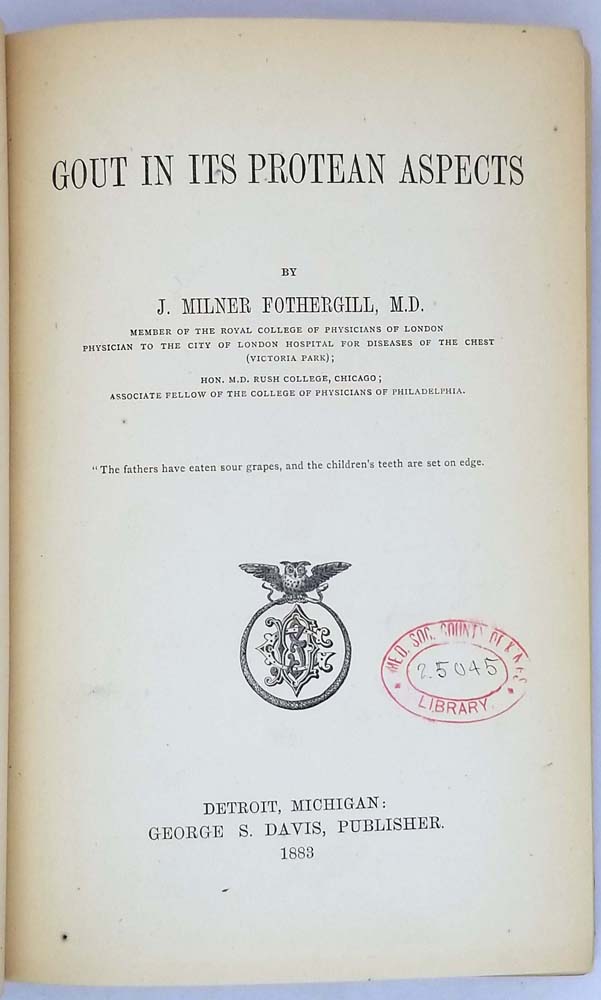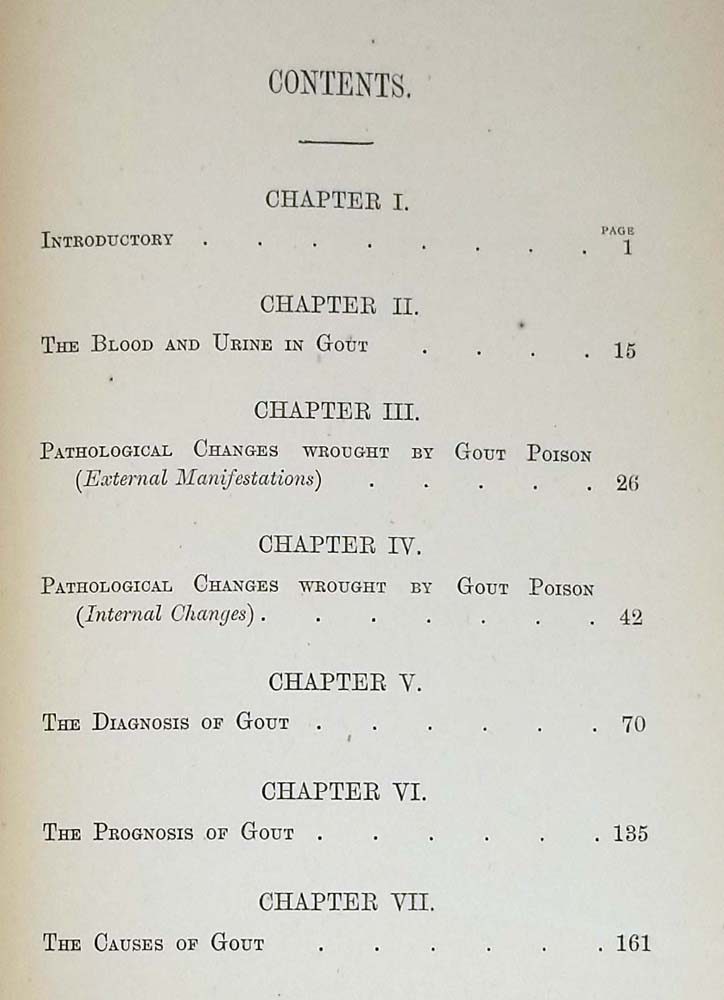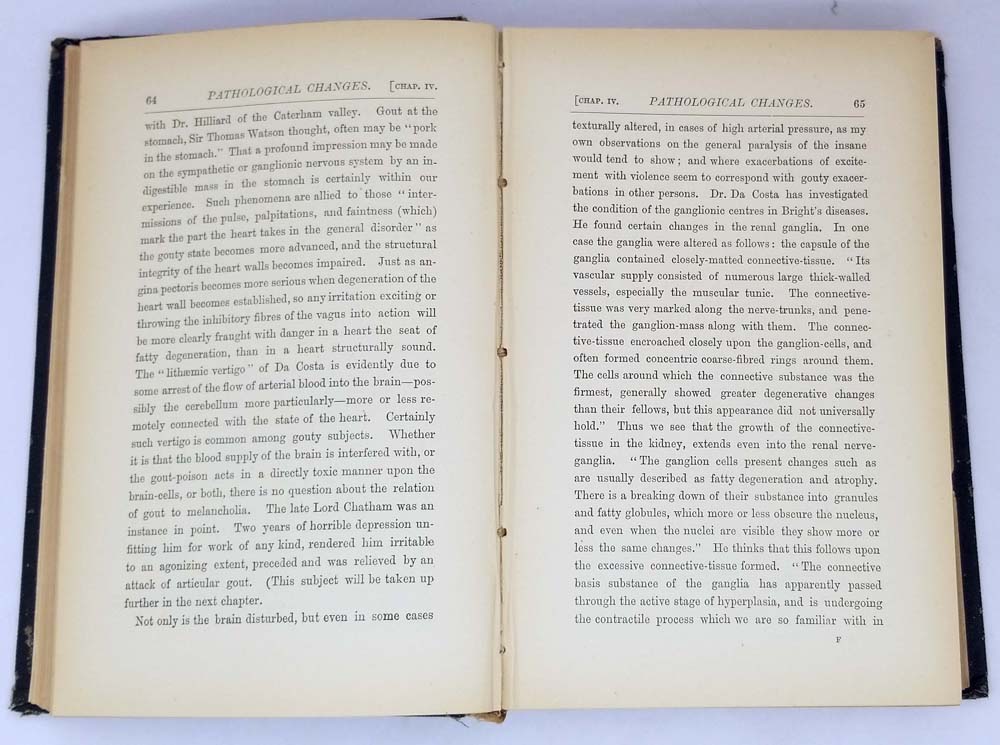Gout in its Protean Aspects (1883) by J. Milner Fothergill is a detailed Victorian-era medical text that examines gout—a painful arthritic condition—through the clinical and theoretical frameworks of late 19th-century medicine. Fothergill, a respected British physician, approaches gout as a complex, systemic disorder with a wide array of manifestations (hence “protean,” referring to its variable forms), affecting not just joints but also the heart, kidneys, and nervous system.
The book reflects the medical understanding of its time, emphasizing heredity, dietary excess (particularly rich foods and alcohol), and moral culpability—a common Victorian trope that framed gout as a disease of indulgence. Fothergill’s observations, while meticulous, lack modern knowledge of uric acid metabolism, which would later become central to gout diagnosis. Instead, he classifies subtypes like “irregular gout” (atypical presentations) and “masked gout” (symptoms mimicking other illnesses), offering case studies that reveal both his diagnostic acumen and the era’s limitations.
Historically significant as a snapshot of pre-biochemical medicine, the text also underscores how medical writing intertwined with social attitudes, blaming patients’ lifestyles while ignoring broader environmental or genetic factors.
For scholars of: Medical history, 19th-century therapeutics, or the evolution of rheumatology.














